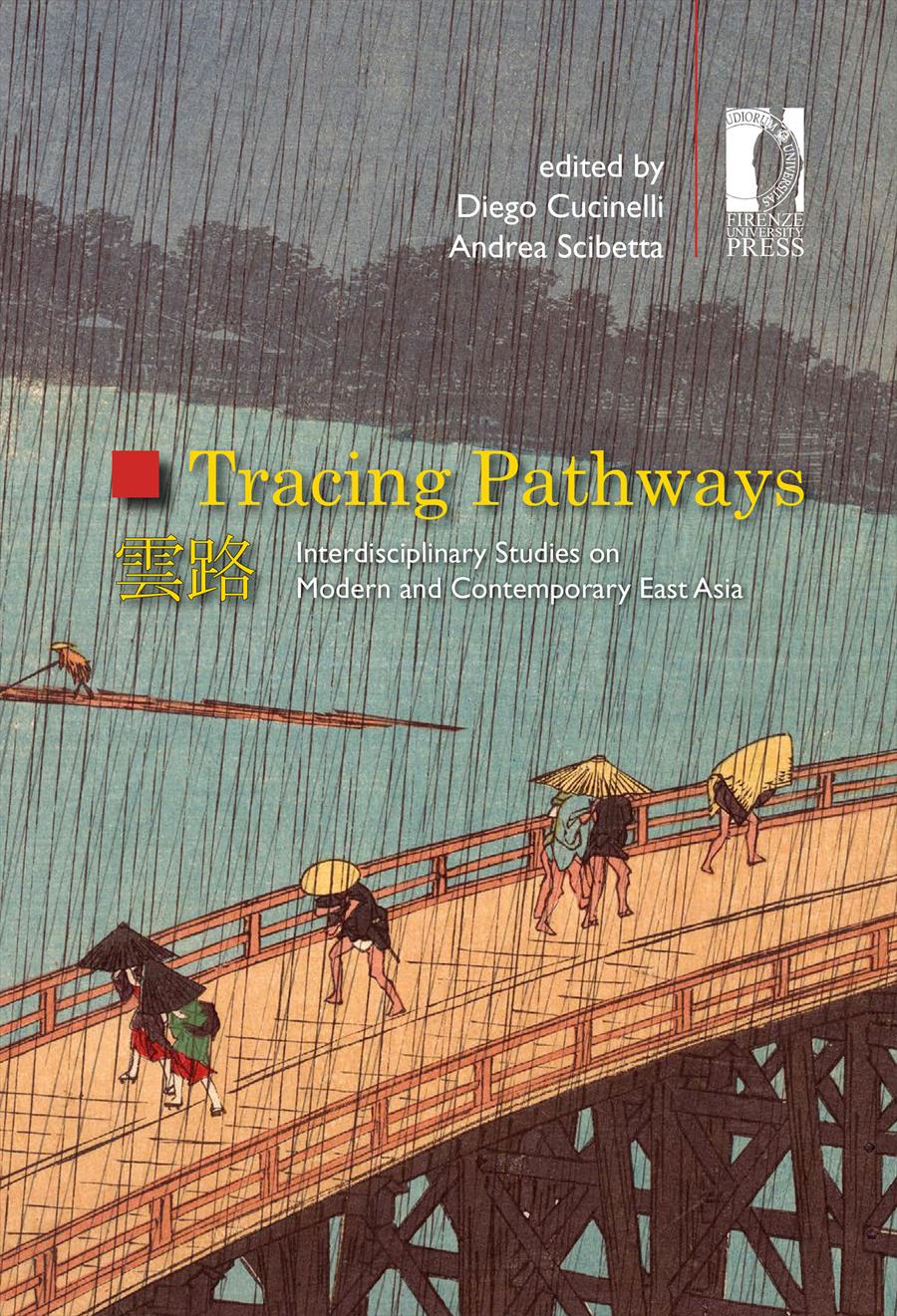- Tracing Pathways 雲路
- Edited by Diego Cucinelli, Andrea Scibetta
Tales of lilies and girls’ love. The depiction of female/female relationships in yuri manga
- Marta Fanasca
- © 2020 Author(s) |
- CC BY 4.0
- DOI: 10.36253/978-88-5518-260-7.03
Yuri manga are focused on the representation of sentimental relations between girls. Despite still being a niche within the manga landscape, the popularity of this genre in terms of number of productions and fans is increasing, and in the last few years its fame has been expanding outside Japan as well. As a manga genre, yuri developed since the mid-2000s. Notwithstanding being a novel genre, yuri narratives are deeply embedded into the heritage of the late Meiji-early Shōwa shōjo bunka (girls’ culture), and especially into the so-called “esu kankei” relationships, girl/girl bonds developing in girls’ schools at the time. The aim of this article is double-folded: from one hand, I will highlight and discuss the birth of yuri manga, analysing the re-elaboration of the heritage of shōjo bunka and its cultural productions - such as Yoshiya Nobuko’s Hana Monogatari - into the first examples of yuri manga, to demonstrate the intermediality and intertextuality of these media. On the other hand, I will map the development of yuri manga through the 2000s, stressing onto the increasing relevance given by these narratives to LGBTQ+ related themes, along with the detachment from the influence of shōjo bunka.
- Keywords:
- manga; yuri; lesbian; female homosexuality; shōjo bunka,
Higher School of Economics, St. Petersburg, Russian Federation - ORCID: 0000-0001-7214-5311
- Adams Tony E. 2010, Paradoxes of sexuality, gay identity, and the closet, «Symbolic Interaction» 33 (2): 234-256.
- Akaeda Kanako 2010, Yuri, in Seitekina kotoba, edited by Inoue Shōichi et al., Kōdansha, Tokyo: pp. 277–286.
- Azuma Hiroki 2007, Gēmuteki riarizumu no tanjō: Dōbutsuka suru posutomodan 2, Kōdansha, Tōkyō.
- Cass Vivienne C. 1979, Homosexual identity formation: A theoretical model, «Journal of homosexuality» 4 (3): 219-235.
- Dollase Hiromi Tsuchiya 2003, Early twentieth century Japanese girls’ magazine stories: Examining Shojo voice in Hanamonogatari (Flower Tales), «Journal of Popular Culture» 36 (4): 724-755.
- Freedman Alisa 2019, Romance of the Taishō Schoolgirl in Shōjo Manga: Here Comes Miss Modern. Shōjo Across Media, Palgrave Macmillan, Cham: 25-48.
- Fujimoto Yukari 1998, Watashi no ibasho wa doko niaru no? Shōjo manga ga utsusu kokoro no katachi, Gakuyō shobō, Tokyo.
- Fujimoto Yukari 2014, Where Is My Place in the World? Early Shōjo Manga Portrayals of Lesbianis, «Mechademia» 9: 25-42.
- Gretchen Jones 2002, “Ladies’ Comics”: Japan’s Not-So-Underground Market in Pornography for Women, «US-Japan Women’s Journal» English Supplement 22: 3-31.
- Katsuyama Toshimitsu 2016, Yuri no sekai nyūmon. Genkōsha, Tokyo.
- Kumata Kazuo 2005, “Otoko-rashisa” to iu yamai? Poppu karuchā no shin-dansei-gaku, Fubaisha: Nagoya.
- Maser Verena 2015, Beautiful and Innocent: Female Same-Sex Intimacy in the Japanese Yuri Genre, PhD thesis.
- McLelland Mark 2000, Is there a Japanese ‘gay identity’?, «Culture, Health & Sexuality» 2 (4): 459-472.
- Nagaike Kazumi 2010, The sexual and textual politics of Japanese lesbian comics: Reading romantic and erotic Yuri narratives, «Electronic Journal of Contemporary Japanese Studies», <https://japanesestudies.org.uk/articles/2010/Nagaike.html>] (07/20).
- Patessio Mara 2013, Women getting a ‘university’education in Meiji Japan: Discourses, realities, and individual lives, «Japan Forum» 25 (4): 556-581.
- Pflugfelder Gregory M. 2006, ‘S’ is for Sister: Schoolgirl Intimacy and “Same-Sex Love” in Early Twentieth-Century Japan, in Gendering modern Japanese history, edited by Barbara Moloney and Kathlees Uno, Brill, Harvard University Asia Center: 131-190.
- Rifkin Lori 2002, The Suit Suits Whom?, «Journal of Lesbian Studies» 6(2): 157-174.
- Scrolavezza Paola 2020, Yoshiya Nobuko: i semi della cultura shōjo in un giardino di parole, in Storie di fiori. Postfazione, Atmosphere Libri, Roma: 215-229.
- Shamoon Deborah 2012, Passionate friendship: the aesthetics of girl’s culture in Japan, University of Hawai’i Press, Honolulu.
- Shimizu Akiko 2007, Scandalous equivocation: a note on the politics of queer self naming, «Inter‐Asia Cultural Studies» 8 (4): 503-516.
- Specchio Anna 2019, Ut pictura poësis – Come nel romanzo, così nel manga. La strana storia dell’Isola Panorama da Edogawa Ranpo a Maruo Shuehiro, «RiCOGNIZIONI. Rivista di Lingue e Letterature straniere e Culture moderne» 6 (12): 53-72.
- Stevens Richard Allen 2004, Understanding gay identity development within the college environment, «Journal of College Student Development» 45 (2): 185-206.
- Suzuki Michiko 2006, Writing Same-Sex Love: Sexology and Literary Representation in Yoshiya Nobuko’s Early Fiction, «The Journal of Asian Studies» 65 (3): 575-599.
- Suzuki Michiko 2010, Becoming Modern Women: Love and Female Identity in Prewar Japanese Literature and Culture, Stanford University Press, Stanford, CA.
- Watanabe Shūko 2009, “Shōjo” zō no tanjō: Kindai Nihon ni okeru “shōjo” kihan no keisei, Shinsensha, Tokyo (first published 2007, 20092).
- Welker James 2008, Lilies of the Margin Beautiful Boys and Queer Female, in AsiaPacifiQueer: Rethinking genders and sexualities , edited by Fran Martin et al., University of Illinois Press, Urbana: 46-66.
- Welker James 2014, Kurata Uso Yuri danshi ni arawasareta yuri fandamu no sugata ni tsuite no ichi kōsatsu, «Yurīka» 45 (15): 148–54.
Chapter Information
Chapter Title
Tales of lilies and girls’ love. The depiction of female/female relationships in yuri manga
Authors
Marta Fanasca
Language
English
DOI
10.36253/978-88-5518-260-7.03
Peer Reviewed
Publication Year
2020
Copyright Information
© 2020 Author(s)
Content License
Metadata License
Bibliographic Information
Book Title
Tracing Pathways 雲路
Book Subtitle
Interdisciplinary Studies on Modern and Contemporary East Asia
Editors
Diego Cucinelli, Andrea Scibetta
Peer Reviewed
Number of Pages
156
Publication Year
2020
Copyright Information
© 2020 Author(s)
Content License
Metadata License
Publisher Name
Firenze University Press
DOI
10.36253/978-88-5518-260-7
ISBN Print
978-88-5518-259-1
eISBN (pdf)
978-88-5518-260-7
Series Title
Studi e saggi
Series ISSN
2704-6478
Series E-ISSN
2704-5919
